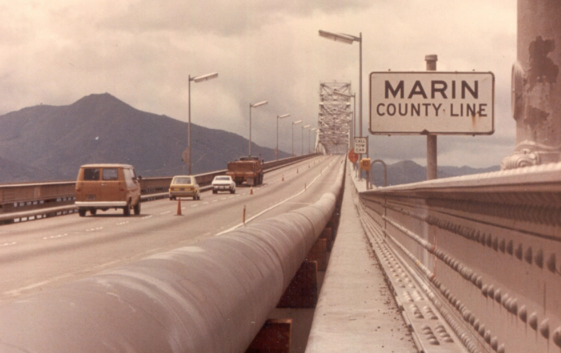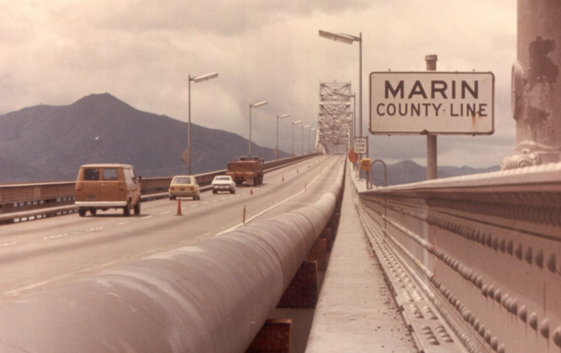Manteca outlawing the use of Slip ‘n’ Slides?
It’s un-American.
What we need or more dams or — better yet — more hairbrained ideas to import water from British Columbia or the Mississippi River watershed into California,.
Forget the fact both regions are suffering from the same drought California is.
Like winter storms like lined up over the Pacific during El Nino, California has been getting slammed by a series of droughts.
Actually, that’s not exactly true.
Climatologists have reams of data that the past 20 years plus in the Southwest that connects the dots between dry years and a sprinkling of normal years with a dash or two of heavy precipitation to confirm we are in a mega-drought that started two decades ago.
Yes, there is climate change going on. But except for the relatively tiny portion man contributes to tip the scales this is all about the natural order of things.
There hasn’t just been one ice age on earth.
Yes, there was “The Ice Age”. But if the truth be known places like Yosemite Valley were carved over the course of at least five relatively recent — in terms of the 4.543 billion years earth has on its odometer — glacier periods that ended as far back as 1.5 million years and as recently as 10,000 years ago.
Why it matters is simple: You can’t address a problem until you know what you are up against.
It is why five words Manteca Councilman Gary Singh spoke earlier this week when talking about the drought are essential for us to grasp.
“We live in a desert.”
The lush East Coast style turf that many of us are hellbent to keep green as eye candy in the rainless summer heat of Manteca is a mirage of sorts.
So are the lush fields and orchards of the San Joaquín Valley that is the most productive farm region on the planet.
It has all been made possible by the capture of snowmelt and construction of the largest water conveyance network man has ever seen.
Just like Los Angeles couldn’t have gotten as big as it has relying solely on in-basin water supplies including groundwater pumping, Manteca and other Northern San Joaquin Valley cities surrounded by intensive farming could not be as large as they are today without harnessing snowmelt.
Nature left to its own devices would flood much of the valley during the winter and spring and leave it bone dry by late summer and the fall.
Which brings us to the measured steps the Manteca City Council has advanced to stretch water supplies as we head deeper into a third year of drought.
It is a tough order given our attention span today.
From watching too much TV like Law & Order, we think a murder case can be solved with a conviction within 60 minutes minus commercial breaks.
Most other disasters — from wildfires, earthquakes and blizzards to tornadoes, hurricanes, and tsunamis — peter out after seconds or weeks.
And while its true the aftermath of the previously mentioned disasters can take months or years to clean up, a drought is a disaster that takes years and even decades to take a civilization to the mat. The problem is if you wait until your supply of water gets low, it is almost impossible to take measures that can effectively enhance your ability to survive it.
The task Manteca’s elected leaders and governing bureaucrats — as well as their counterparts throughout not just California but The West — is daunting.
They must find a way to steer people away from the mirage that we have created with water.
The Slip ‘n’ Slide ban is common sense unless, of course, you believe the Constitution gives you the right to hook up a garden hose in the middle of a severe drought and waste a bunch of water.
The entitlement push back is just half of the problem.
The other is the assumption if you pay for it, you can do what you please.
Treated water — and the infrastructure that secures, stores and distributes it — is a community asset.
Even the fabulously rich folks like the Kardashians can’t afford to replicate what the government acting on behalf of all people can do when it comes to making sure we have an ample and secure supply of water.
The combination of entitlement and “it’s my money” attitude is why purveyors of water in Southern California are locked in an epic struggle with many wealthy homeowners that have decided restrictions to watering lawns to once or twice a week is a rule for the little people to follow and not those living on vast estates covered with high maintenance water guzzling turf.
Singh and several of his council colleagues Wednesday gave the broad outline of how Manteca — and the rest of California for that matter — could steer clear of public health and safety disasters as well as economic fallout that would occur if we don’t change our ways when it comes to water.
They want a push requiring all new construction to have landscaping from a vetted list of water miserly shrubs, plants and even turf/ground cover. And, as Councilman Charlie Halford pointed out, there needs to be enforcement for the common good if buyers of new homes opt to rip out and replace the mandated drought tolerant plantings with those that are water hogs when it comes to the reality the Manteca climate.
An example is Kirapia, a highly tolerant ground cover can easily replace grass that is intended primarily as eye candy and dust control.
Once established, it only needs watering four or so times a month.
It still requires mowing. And, yes, it does die back during freezes and frosts that are rare in Manteca. However, it comes back in the spring if it is well-established.
It also can tolerate light foot traffic
We need to treat water for the precious commodity that it is in the desert-like climate that defines Manteca for most months
That means undoing close to a century of water practices when it comes to everything from the lawns we plant and how often we water them to how we employ water to wash sidewalks and such.
We’ve got to start living in our reality and stop living in a myth.
That means first we must see the concept of endless water supplies in California for what it is — a mirage.
This column is the opinion of editor, Dennis Wyatt, and does not necessarily represent the opinions of The Bulletin or 209 Multimedia. He can be reached at dwyatt@mantecabulletin.com





